
Bi-annuals like onions and cabbage are a challenge for seed saving because they don’t make seeds until their second year. While it is more involved than simple annuals like tomatoes, beans, corn, etc., it can be done.
Where to Begin
Last fall, when I harvested my cabbages, I cut the heads off leaving four or more of the big bottom leaves. This left the stumps and roots with enough leaf to stay alive. As winter approached, I mulched over the stumps with about a foot of loose whole leaves. (To keep the chickens from un-piling my leaf mulch, I put a circle of fencing around the pile. This kept the wind from blowing it all away.
Signs of life
In April, after the last of the snow had melted away, I dug around in my leaf mulch. Of the four stumps I left, three of them had little leaf shoots. They were white, from the lack of sun, but there was life! I pulled the leaf litter back to let them get some sun. In just a week, there were little green leaves emerging from last year’s stumps.
The stumps continued to put out leaves, growing more vertical than they had last year. They did not exhibit that habit of the inner leaves curling back on the center like they do when forming heads. Instead, they were making flower stalks.
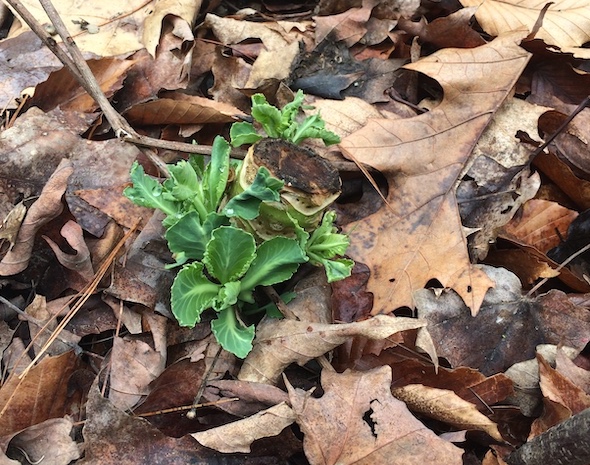
Flowers
By June, the light flower bud pods had spread into a loose panicle of little yellow buds. These opened up slowly, a few at a time, over the summer. The pods formed rather slowly after the flowers fell off. It seemed to take forever for the pods to grow and mature.
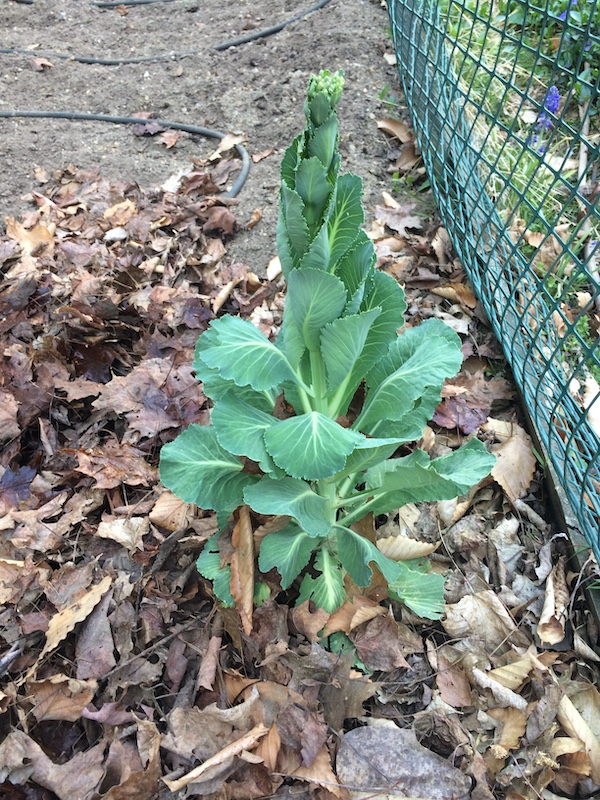
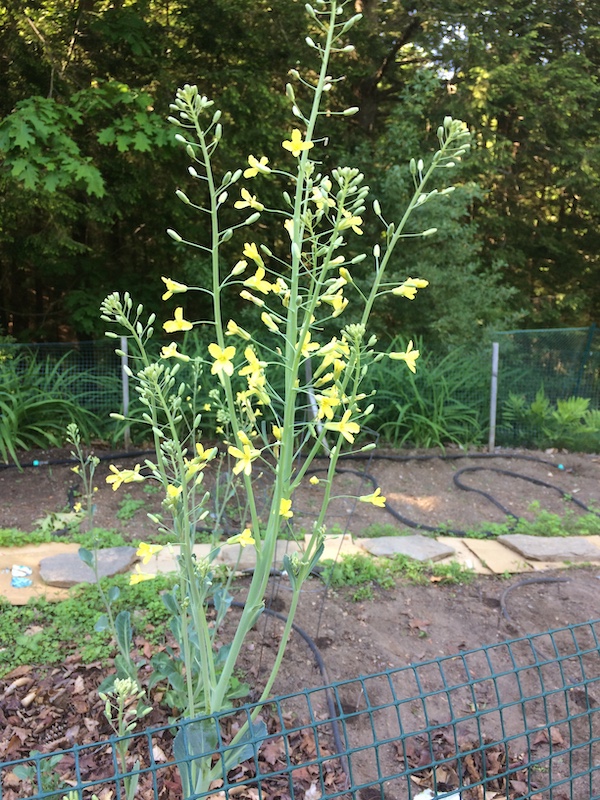
Pods and Seeds
By mid-August, the lowest of the pods had grown to several inches long and started to dry. If left to themselves, the pods split into two long halves, dropping their tiny seeds. I picked some of the big pods before they split. I let them dry indoors. They spilt pretty easily. Inside the long pods were eight or more tiny, round, black seeds. Smaller pods sometimes had only two seeds.
I didn’t have time to keep checking for ripening pods, so I cut off the whole panicle and put it upside down into a paper bag. As the pods dried and split, they dropped their seeds into the bag.
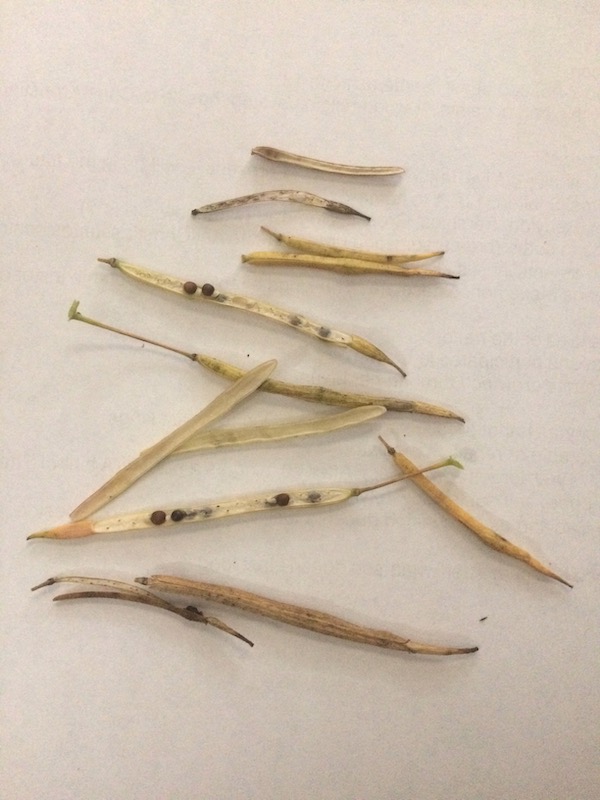
Limited Shelf Life
Cabbage seeds start losing fertility after just a couple of years. That said, I have planted some five-year-old seeds and had many germinate, they were very slow about it. I’d nearly given up on them. The fresh seeds sprouted in only a few days.
Custom Cabbage
The seeds I gathered this year will get planted in next year’s garden. Truth is, I got hundreds of seeds — far more than I’ll plant next year. The fact that they grew well (making lovely heads last year), survived the winter, and produced flowers, means I should have a variety that is well-adapted to my garden’s conditions.
Not Quite Dead
The fourth stump from last year turned out to be not-quite-dead. I left it in place, as the space was getting no other use. In mid-July, the fourth stump started putting out leaves too. It was too late in the season for that fourth stump to send up a flower stalk. Instead, it seems to be trying to form a head.
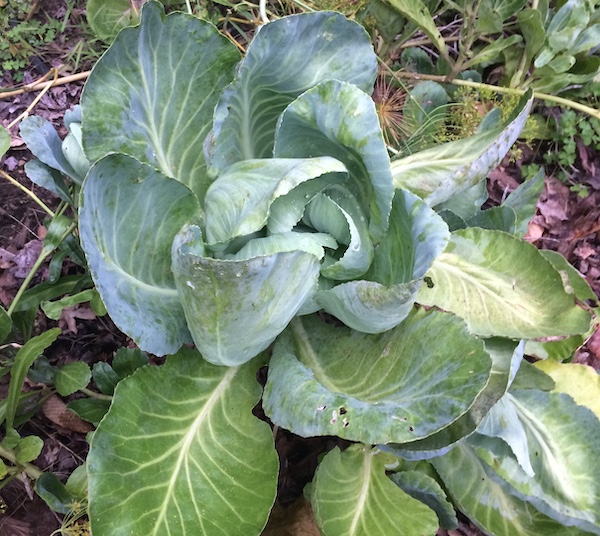
The weather in August had been too hot for cabbages. They just sat there, growing very little. Now that the cooler weather has begun, it will be interesting to see if my last-year stump will actually produce a second head.
Give It a Try
If you grew cabbage in your garden this year, try leaving a couple of the stumps (with some of the bottom leaves), mulch them over, and see if you can get 2nd-year cabbages. If they survive the winter, they may send up flowers. You can produce your own cabbage seeds!
—

Thanks, Mic. I had no idea that cabbage was a bi-annual crop. I have a tiny bed of cabbage that was annihilated from bugs. They looked dead but eventually tried to form heads but couldn’t quite get there before the heat stalled them. Should I let them be and cover them with mulch over the winter?
I wondered if you can harvest those leaves on the second-year plants, or does that keep the seed pods from developing?
Also, my onions were a bit of a disappointment. They are about the size of a golf ball. This is my first year growing them. Should I leave them be even though they didn’t thrive so I can get seed from them next year? Or will those seeds produce similar results?
Hey Brian,
It wouldn’t cost you anything to try and over-winter your cabbages. Nothing lost if they don’t make it. I’m not sure how good the outer leaves are for food. A bit tough, perhaps. I’ll to go pick some and see.
I had more success with my onions from seed this year. I started them indoors about six weeks before last frost (so in April). I did two kinds. One was an “intermediate day” variety. The other was a “long day” type. It could be that yours didn’t get enough of a headstart before the ‘trigger’ (length of day) that tells the plant to start forming a bulb. It may be more a matter of when you start them than the seeds themselves, for how big the bulbs get.
I did plant a grocery store onion earlier this summer, that had sprouted quite a bit in storage. It did put up two flower stalks and I got seeds from those. Maybe overwinter your onions too and see what you get.
Looks good Mic!
As far as tough cabbage leaves a bit of braising or shredding for kraut fixes that 🙂
We need to meet up before the snow and trade seeds. What landrace name shall we give this NH Bred Cabbage? Maybe wait for a year plus to see how well it produces, then name it?